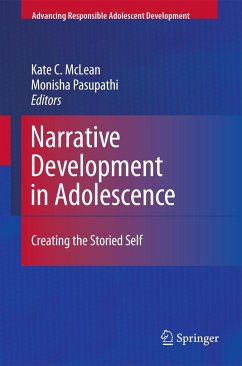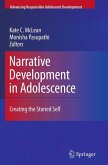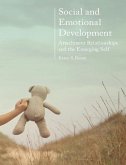This is the first book to examine narrative development during adolescence in depth. It focuses on both stable and at-risk youth, offering insights into the crucial task of identity development and exploring new possibilities for counseling and therapy.
Monisha Pasupathi and Kate C. McLean Where Have You Been, Where Are You Going? Narrative Identity in Adolescence How can we help youth move from childhood to adulthood in the most effective and positive way possible? This is a question that parents, educators, researchers, and policy makers engage with every day. In this book, we explore the potential power of the stories that youth construct as one route for such movement. Our emphasis is on how those stories serve to build a sense of identity for youth and how the kinds of stories youth tell are informed by their broader contexts - from parents and friends to nationalities and history. Identity development, and in part- ular narrative identity development, concerns the ways in which adolescents must integrate their past and present and articulate and anticipate their futures (Erikson, 1968). Viewed in this way, identity development is not only unique to adol- cence (and emergent adulthood), but also intimately linked to childhood and to adulthood. The title for this chapter, borrowed from the Joyce Carol Oates story, highlights the precarious position of adolescence in relation to the construction of identity. In this story, the protagonist, poised between childhood and adulthood, navigates a series of encounters with relatively little awareness of either her childhood past or her potential adult futures. Her choices are risky and her future, at the end, looks dark.
Monisha Pasupathi and Kate C. McLean Where Have You Been, Where Are You Going? Narrative Identity in Adolescence How can we help youth move from childhood to adulthood in the most effective and positive way possible? This is a question that parents, educators, researchers, and policy makers engage with every day. In this book, we explore the potential power of the stories that youth construct as one route for such movement. Our emphasis is on how those stories serve to build a sense of identity for youth and how the kinds of stories youth tell are informed by their broader contexts - from parents and friends to nationalities and history. Identity development, and in part- ular narrative identity development, concerns the ways in which adolescents must integrate their past and present and articulate and anticipate their futures (Erikson, 1968). Viewed in this way, identity development is not only unique to adol- cence (and emergent adulthood), but also intimately linked to childhood and to adulthood. The title for this chapter, borrowed from the Joyce Carol Oates story, highlights the precarious position of adolescence in relation to the construction of identity. In this story, the protagonist, poised between childhood and adulthood, navigates a series of encounters with relatively little awareness of either her childhood past or her potential adult futures. Her choices are risky and her future, at the end, looks dark.
From the reviews:
"This book focuses on understanding the life stories of adolescents and the relationship to developmental maturity. ... It is intended for researchers, clinicians, and graduate students in developmental, clinical, child, and school psychology as well as allied mental health and education fields. ... great need to understand teenagers and help them as they grow into adulthood. ... The international authorship gives readers a chance to understand youth from all over the world. Clinicians working with teenagers will find this of great help." (Gary B. Kanuik, Doody's Review Service, May, 2010)
"Narrative Development in Adolescence: Creating the Storied Self, edited by Kate McLean and Monisha Pasupathi, represents the emergence of a new field within the world of narrative psychology-adolescent narrative development. ... It is an essential resource for researchers, clinicians and anyone conducting research or working with adolescents and who seek to ensure their healthy development and successful transition to adulthood." (Prathiba Nagabhushan, Journal of Youth Adolescence, Vol. 40, 2011)
"This book focuses on understanding the life stories of adolescents and the relationship to developmental maturity. ... It is intended for researchers, clinicians, and graduate students in developmental, clinical, child, and school psychology as well as allied mental health and education fields. ... great need to understand teenagers and help them as they grow into adulthood. ... The international authorship gives readers a chance to understand youth from all over the world. Clinicians working with teenagers will find this of great help." (Gary B. Kanuik, Doody's Review Service, May, 2010)
"Narrative Development in Adolescence: Creating the Storied Self, edited by Kate McLean and Monisha Pasupathi, represents the emergence of a new field within the world of narrative psychology-adolescent narrative development. ... It is an essential resource for researchers, clinicians and anyone conducting research or working with adolescents and who seek to ensure their healthy development and successful transition to adulthood." (Prathiba Nagabhushan, Journal of Youth Adolescence, Vol. 40, 2011)








